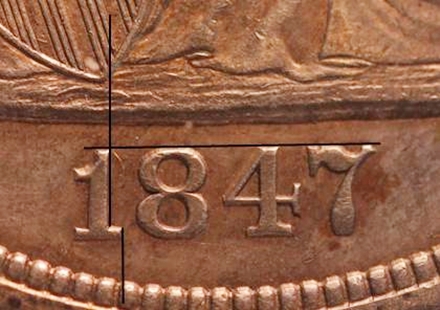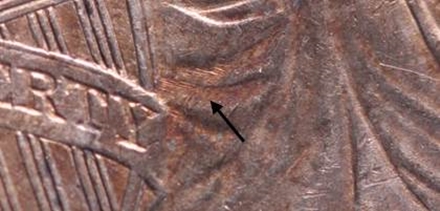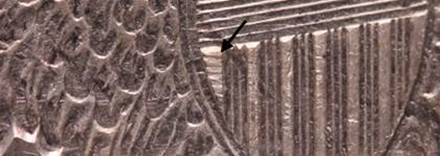|
|
Comments: This is the second and final use Obverse 1 and the only use of Reverse A. |
Obverse 1 The photo below shows the Obverse 1 attribution grid.  1847 Obverse 1 attribution grid Obverse 1 exhibits faint die lines slanting down to the right, extending from the right edge of the shield into the gown just above the Y in LIBERTY. These are shown in the photo below.  1847 Obverse 1 die lines in gown These die lines provide an additional marker to assure proper attribution, but they aren't really required since the date positions for the two known business strike obverse dies are so different.
|
Reverse A Reverse A features very heavy die lines at the top of shield recess #1. They should be visible on all mid- to high-grade examples. There are many other die lines in the shield recesses, but those at the top of recess #1 are the most visible.  1847 Reverse A die lines in shield recesses
|
| Photo credits:
Obverse 1: 1847 NGC AU55, from the Osburn-Cushing reference collection. Reverse A: 1847 PCGS AU53 CAC, from the Osburn-Cushing reference collection. |
